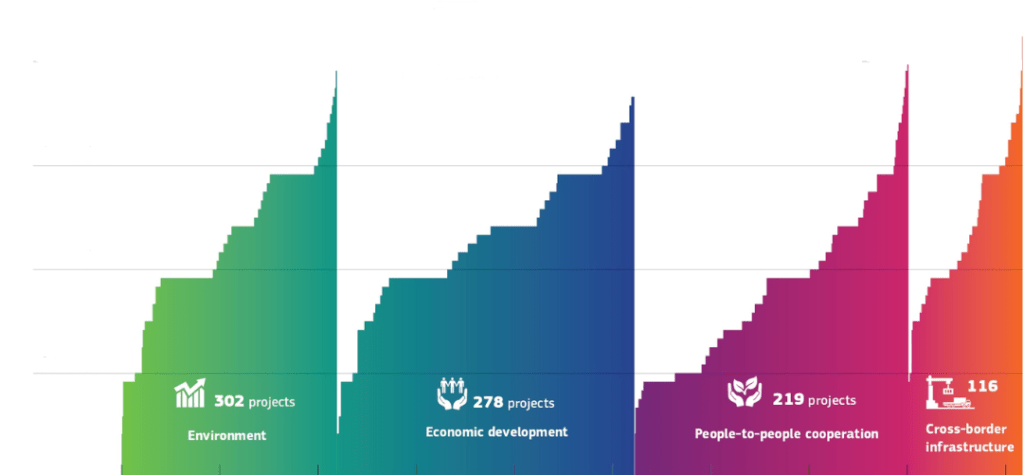The x-ray photography of the ENI CBC world
Which is the average project duration? How are lead partners distributed throughout territories? Which is the average budget per thematic cluster and how is it distributed across geographical areas? To these and many more questions a new TESIM publication is ready to answer, thanks to a detailed analysis of the 915 projects financed through cross-border cooperation programmes under the 2014-2020 European Neighbourhood Instrument (ENI CBC). Over 1,1 billion EUR has been mobilised by this facility, and 3.613 organisations have been driven into action on both sides of the external European borders to implement activities.
To know more about the challenges and achievements of the community, we have often told stories, shown faces, collected voices. This time, thanks to this new information tool, TESIM is providing an overview of the thematic approach implemented across the various territories. In fact, projects have been clustered in four thematic areas: environment, people-to-people cooperation, economic development, and cross-border infrastructures. Focusing on the analysis of the database, many different elements have appeared, bringing forward the diversities of approaches across the regions, the sectors, the programmes.
Have a look at the document! It is organised in a simple and straightforward way, with many graphics and maps to highlight important information.
We learn for example that Large Infrastructure Projects (LIPs) represent only 6% of the projects, but their budget totals 26% of the overall funds. We see that environment is addressed by less than a quarter of the projects, and that the people-to-people cluster uses less than 20% of the overall budget despite the large number of projects. Specific sections of the document also provide an insight about general issues like the involvement of Youth across programmes, or the transition and continuity from ENI CBC 2014-2020 to Interreg NEXT 2021-2027.
This first overview will be followed by more specific documents, breaking down each thematic clusters into a more detailed analysis. We hope these pages will stimulate your curiosity to learn more about neighbourhood cross-border cooperation. Find it in our Library!

